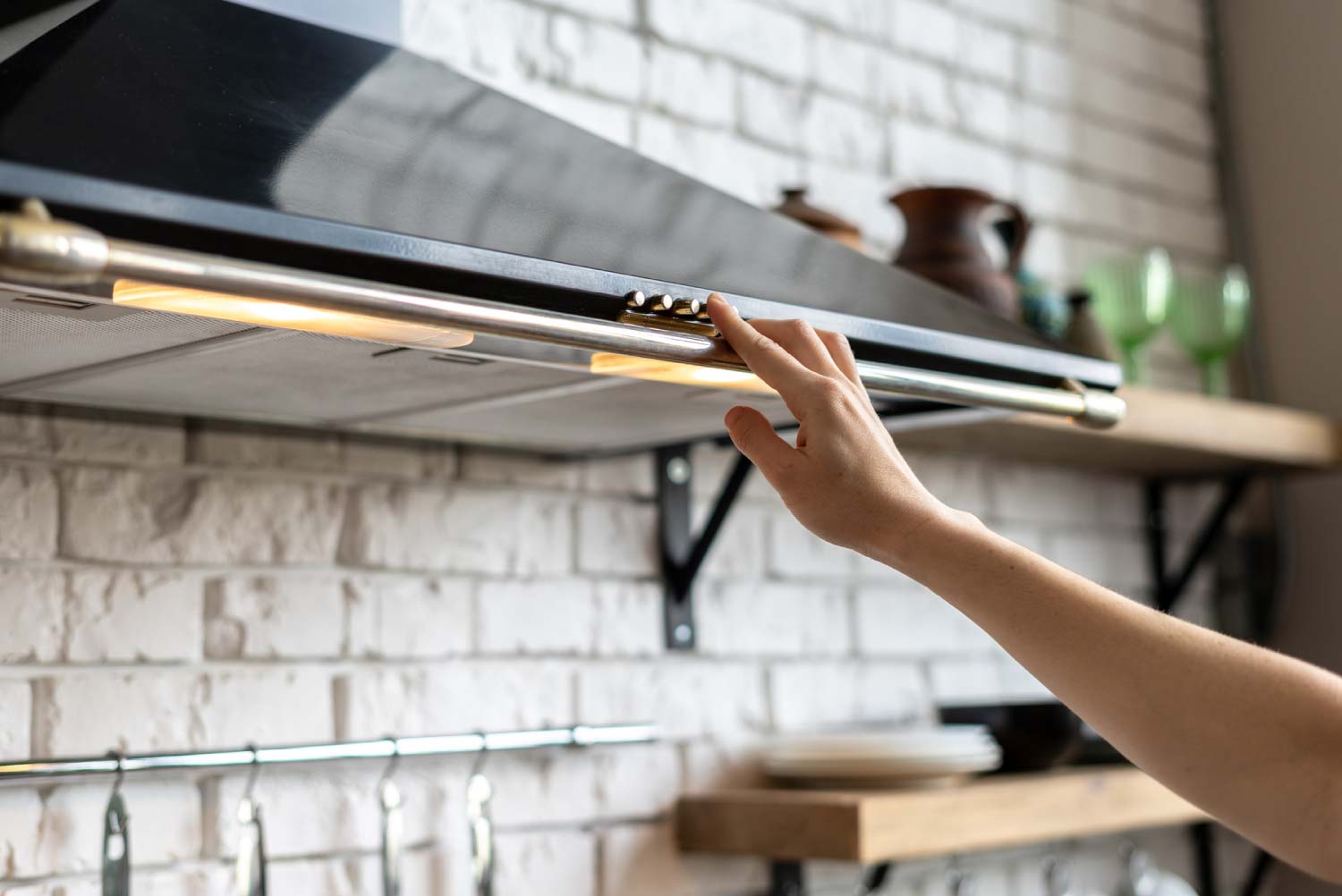
Discover how much move-out cleaning costs based on your home size, condition, the amount of belongings, and the services included.
Home automation service costs depend on your project and location. Check with a local pro for your specific job.
A smart home system costs $850 on average to install but can range from $65 to $4,500.
Basic systems might run from $150 to $1,500, whereas advanced systems can run up to $2,500 to $10,000+.
Pre-installation assessment and prep, including site visits, system design, and consultations, can cost $75 to $300.
You may also face ongoing monthly operational costs, such as security monitoring ($10 to $40) or cloud storage ($3 to $10).
This article was created using automation technology and thoroughly fact-checked and edited by an Angi Editor in accordance with our AI policy.
Smart home system costs range, on average, from $202 to $1,598, with most homeowners paying an average of $850. Homeowners may pay as little as $65 for a basic system or up to $4,500 for a professionally installed, whole-home system. Costs depend on system type, home size, and device selection.
Whether you want to boost security, save energy, or enjoy more convenience with home automation, understanding these costs helps you plan an upgrade that fits your needs and budget.
Understanding what drives smart home system cost can help you set realistic expectations and prioritize features that matter most to your household. Let’s break down the main areas that impact your investment.
Smart home systems come in several forms, each affecting overall cost. Basic systems might include a single device, such as a smart speaker or thermostat. Mid-range packages often feature several devices, like smart lights and security cameras, while advanced setups provide whole-home automation with integrated control of lighting, HVAC, security, and entertainment.
A security-focused system will have different components—and a different price—than a system designed for entertainment or energy management. Integrated solutions, tailored to your home and lifestyle, cost more than pre-packaged kits but offer seamless control and greater flexibility.
| System Type | Typical Features | Cost Range |
|---|---|---|
| Basic | Single device (speaker, thermostat, or light) | $150–$1,500 |
| Mid-range | Multiple devices; basic integration | $2,000–$6,000 |
| Advanced | Whole-home automation, custom integration | $2,500–$10,000+ |
The size of your home directly impacts your smart home system cost. Larger homes require more devices, additional hubs, and extended wiring or wireless coverage. For instance, a three-bedroom house may need extra sensors, cameras, or smart switches compared to a studio apartment.
Apartments, single-family homes, and large estates each have unique needs. More square footage or rooms means scaling up your system, which increases both device and labor costs.
| Home Size (Rooms) | Number of Devices | Average Cost |
|---|---|---|
| Apartment (1–2 rooms) | 2–5 | $300–$1,500 |
| Medium home (3–5 rooms) | 6–12 | $2,000–$6,000 |
| Large home (6+ rooms) | 13–25+ | $4,000–$10,000+ |
Device selection is one of the biggest variables in smart home system cost. Popular devices include smart thermostats, lighting, cameras, locks, sensors, hubs, and speakers. Entry-level brands are more affordable but may offer fewer features or integration options, while premium brands provide advanced capabilities at a higher price.
Integration hardware, like hubs or bridges, and any necessary wiring, also adds to the cost. Choosing the right mix of devices ensures both function and value.
| Device Type | Average Unit Cost |
|---|---|
| Smart thermostat | $50–$500 |
| Smart lighting | $10–$150 |
| Security camera | $225–$1,000 |
| Smart lock | $125–$500 |
| Hub/controller | $75–$700 |
| Sensors | $20–$1,000 |
| Smart speaker | $40–$500 |
Professional installation adds to smart home system cost, but it brings expertise and peace of mind. Electricians, home automation specialists, and security installers are common choices. Labor rates range from $50 to $150 per hour, or flat fees for larger jobs. Costs can be higher in large cities, or for complex, custom installations.
Retrofitting older homes may require more time than new construction. More devices and deeper integration increase labor hours and total costs, but also ensure a robust, reliable system.
Before installation, a professional may conduct a pre-installation assessment to check your home’s readiness. Some homes need electrical upgrades or improved Wi-Fi to support smart devices. Expect fees for site visits, system design, or consultations, which range from $75 to $300.
You may also incur costs for removing old devices, prepping walls or ceilings for new wiring, or making other adjustments to ensure your home is ready for new technology.
Tipping smart home system installers is not always expected, but it’s a thoughtful way to show appreciation for excellent work. If you choose to tip, $20 to $50 per installer is common for larger projects. Alternatively, positive reviews or referrals are valued ways to thank your installer.
Several other factors can influence your smart home system cost:
Permit and inspection fees for electrical or security work
Demolition or removal of old devices or systems
Post-installation cleanup or patching, such as drywall repair after wiring
Foundation or structural modifications for outdoor cameras or other devices
Integration with existing home systems like HVAC, security, or entertainment
Decorative or convenience add-ons, such as custom wall mounts
Upgrades for future-proofing or expanding your system later
Owning a smart home system isn’t a one-time expense. Let’s look at what you can expect for ongoing maintenance, operating costs, repairs, and insurance.
Routine maintenance keeps your system running smoothly. This might include replacing batteries, cleaning devices, and updating firmware or software. Some systems require annual or semiannual check-ups, especially if you have professional monitoring or cloud storage subscriptions.
| Maintenance Task | Frequency | Average Cost (Annually) |
|---|---|---|
| Battery replacements | 1–2 times annually | $20–$50 |
| Device cleaning | As needed | $0–$50 |
| Firmware updates | Ongoing | $0 |
| Professional check-up | Annual | $75–$200 |
| Cloud storage/monitoring | Annual | $60–$300 |
Some smart home features require ongoing subscriptions, such as for cloud storage, professional security monitoring, or automation services. Smart devices use electricity and data; while most are energy efficient, adding many devices can slightly increase your utility bill. In some cases, you may need to upgrade your internet plan for optimal performance.
| Operating Cost Type | Frequency | Average Cost (Per Month) |
|---|---|---|
| Security monitoring | Monthly/annual | $10–$40 |
| Cloud storage | Monthly/annual | $3–$10 |
| Energy usage | Monthly | $1–$10 per device |
| Internet upgrade | One-time/monthly | $0–$50 |
Over time, devices can malfunction, lose connectivity, or require replacement. Repair costs vary depending on the device and issue. Most smart devices last 3 to 7 years, but warranties can help offset costs.
| Repair Type | Frequency | Average Cost |
|---|---|---|
| Device replacement | Every 3–7 years | $50–$300 |
| Connectivity issue | As needed | $75–$200 |
| Every 2–4 years | $20–$60 |
Installing a smart home system can sometimes lower your homeowners insurance premium, especially if you add security or safety features. Some devices, like smart smoke detectors or cameras, qualify for discounts.
If you install high-value equipment, consider additional coverage in case of theft, damage, or cyber risks. The cost of insuring smart home devices is relatively low, but check with your provider for specifics.
Choosing between DIY and professional installation is a key decision that affects smart home system cost. DIY projects can save money on labor and let you customize your system at your own pace. Expenses include the cost of devices, any needed tools, and your time. However, DIY projects require research, technical know-how, and attention to detail.
Professional installation costs more but ensures all devices work together safely and efficiently. It also reduces the risk of compatibility issues, performance problems, or voided warranties. Complex or large-scale systems are best left to a local remodel designer, while basic setups are manageable for many homeowners.
Adding features to your smart home system can improve comfort, security, and convenience, but each add-on increases the total cost. Here are some of the most popular upgrades and their average prices:
Smart security cameras and video doorbells: $100 to $400 per device
Smart thermostats and climate control: $100 to $300 each
Smart lighting (bulbs, switches, dimmers): $20 to $100 per device
Smart locks and access control: $100 to $300 per lock
Voice assistants and smart speakers: $50 to $200 each
Smart garage door openers: $100 to $300 each
Smart smoke/CO detectors: $50 to $150 each
Home automation hubs or control panels: $75 to $250 each
Additional sensors (motion, leak, window/door): $20 to $60 each
Integration with entertainment systems (smart TVs, streaming devices): $100 to $500
Each of these add-ons enhances your system’s capabilities, but it’s wise to prioritize based on needs and budget.
You can manage smart home system costs without sacrificing quality or functionality. Consider these strategies:
Obtain multiple quotes from certified smart home experts to compare pricing and services.
Choose budget-friendly devices and materials with proven durability for your smart home needs.
Opt for scalable systems that allow future expansion without major upgrades.
Bundle your smart home installation with other home upgrades or services to take advantage of package discounts.
Leverage rebates or incentives from utility companies for energy-saving devices.
Home is the most important place on earth, which is why Angi has helped more than 150 million homeowners transform their houses into homes they adore. To help homeowners with their next project, Angi provides readers with the most accurate cost data and upholds strict editorial standards. We extensively research project costs to develop the pricing data you see, so you can make the best decisions for you and your home. We rely on reputable sources, including the U.S. Bureau of Labor Statistics, academic journals, market studies, and interviews with industry experts—all to ensure our prices reflect real-world projects.
Want to help us improve our cost data? Send us a recent project quote to [email protected]. Quotes and personal information will not be shared publicly.
From average costs to expert advice, get all the answers you need to get your job done.

Discover how much move-out cleaning costs based on your home size, condition, the amount of belongings, and the services included.

Discover the average kitchen hood cleaning cost, what impacts pricing, and how to budget for this essential maintenance. Get tips to save and keep your kitchen safe.

Tile and grout cleaning brings your tiled rooms back to life. In this guide, find out the details of how much it costs to hire tile and grout cleaners.

Find out the average commercial cleaning cost, what factors impact pricing, and how to save—empowering you to make informed decisions for your business.

The benefits of steam cleaning your home are abundant, and you’ll wonder why you didn’t do it sooner. However, you must learn which materials cannot be steam cleaned.

Professional cleaning companies offer move-out and move-in services that can cut stress, reduce allergens, and save you time, as well as your security deposit.